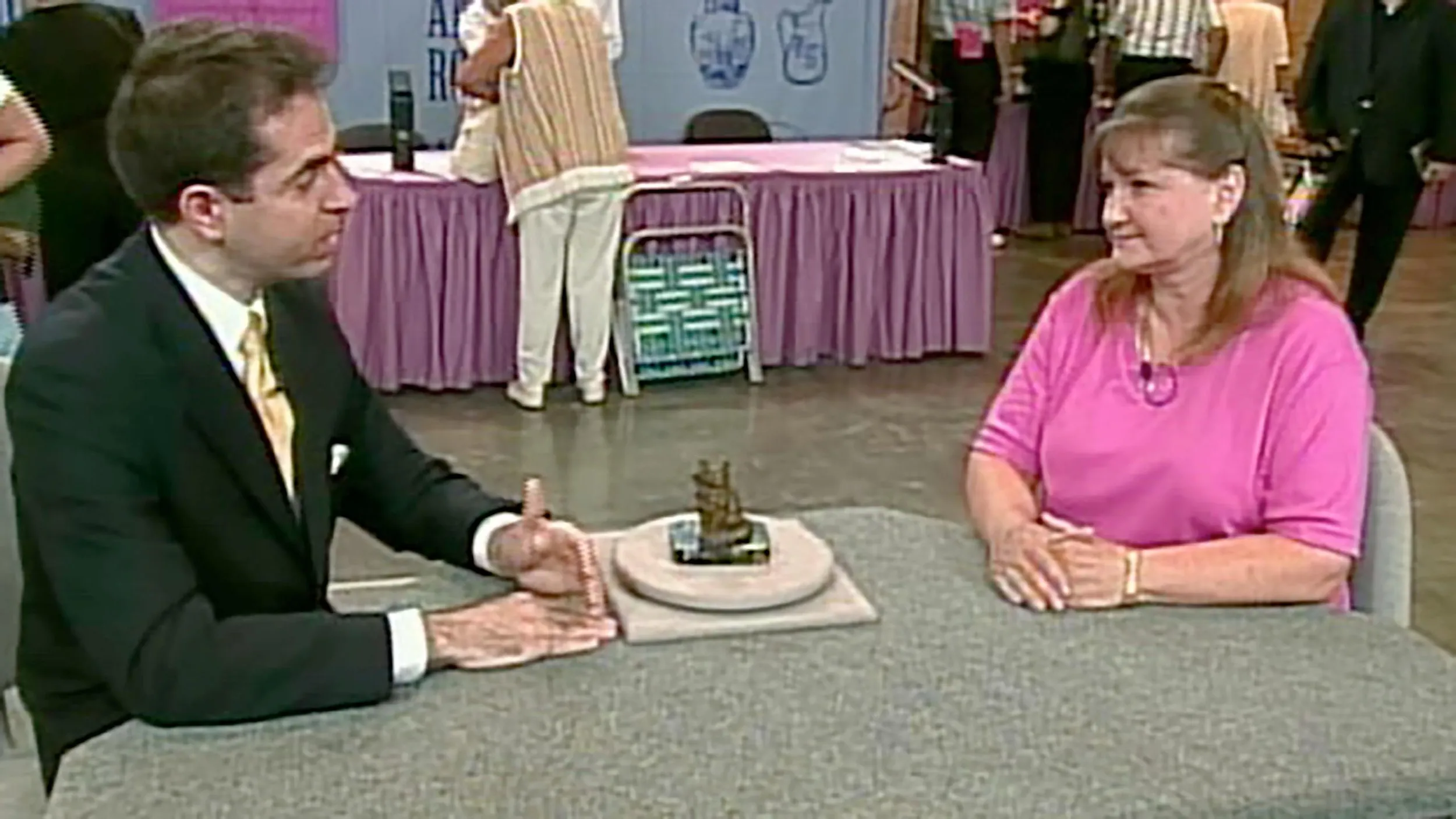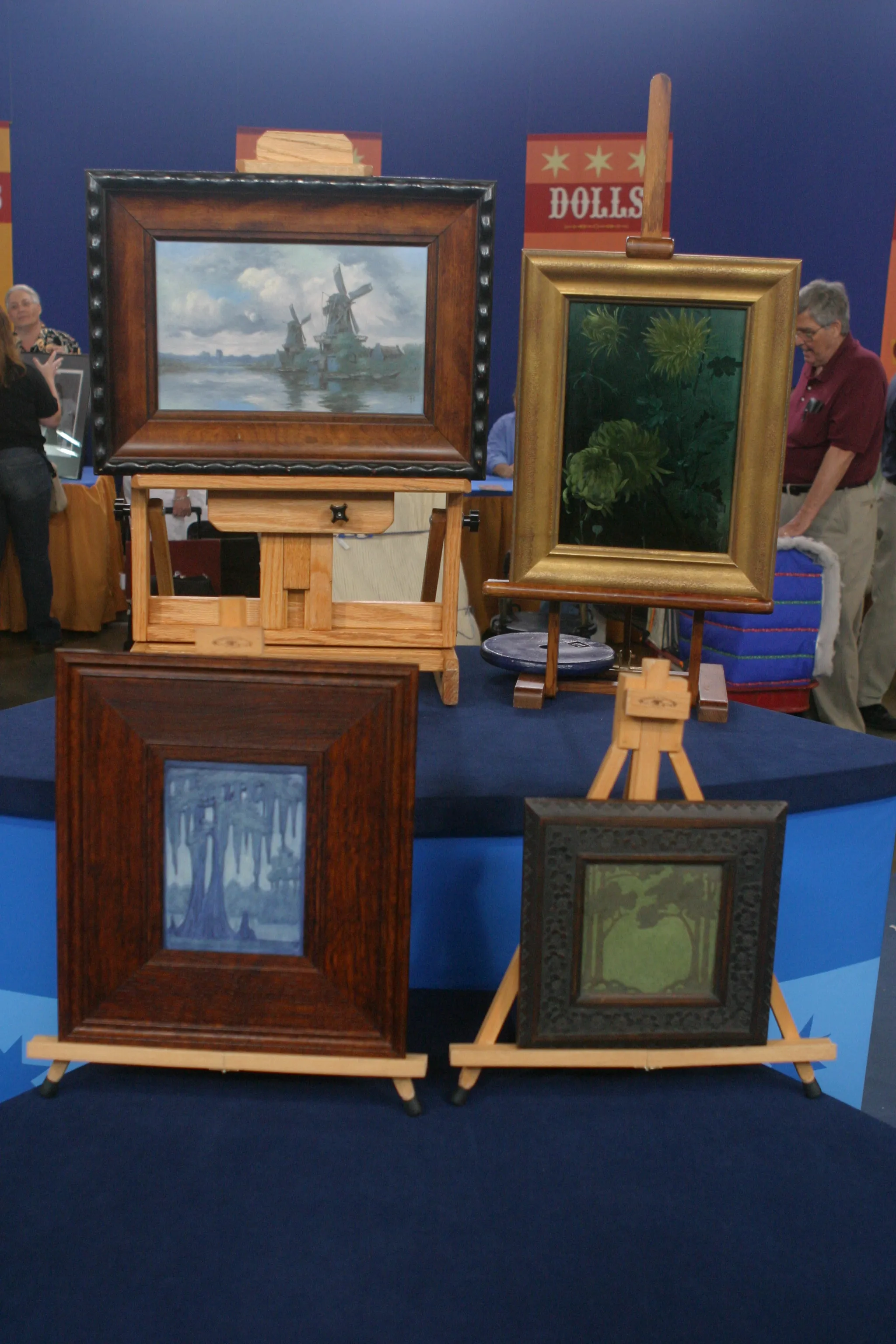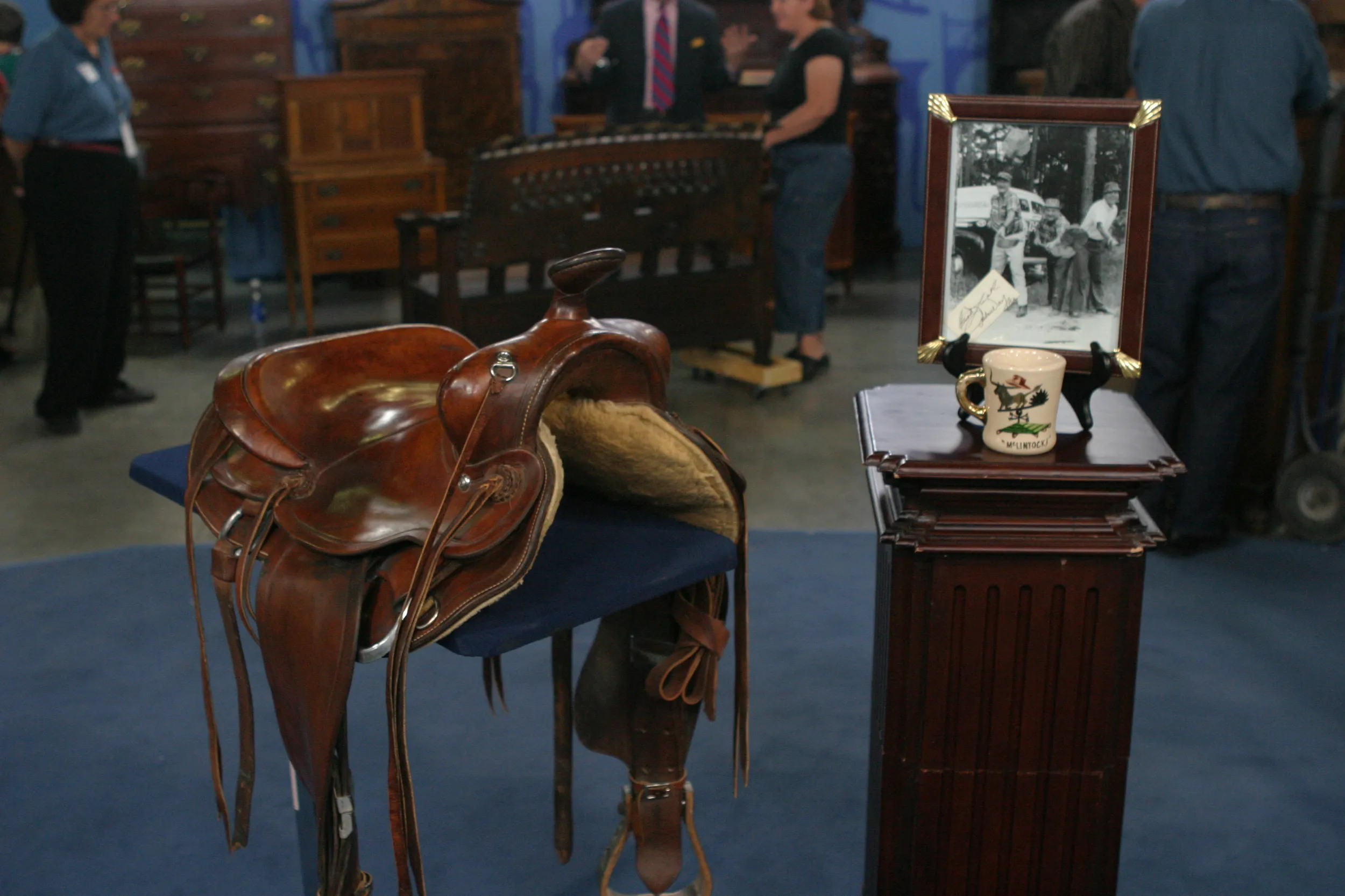GUEST: We have a local gallery that does prints and framing, and he very willingly, gave me some numbers to call in New York, some in Atlanta.
APPRAISER: And what were you trying to find out?
GUEST: Uh, just anything at all about them. How to take care, how to restore, and the age and the worth.
APPRAISER: Right. They say on them that they are by N. Currier, and they have the date on them. This one's 1852, and this one's around the same date. So you know that it was allegedly done by the firm of Currier and Ives before Ives joined, by N. Currier. Currier and Ives prints, or Currier prints, are the most often reproduced of all American prints, so it's always a very important question to ask. And one thing you do is, you look into a book like this, which is the standard reference book on Currier and Ives, checking out the titles to make sure the titles match exactly and that the size is correct. But you have to do more than that, because they've been reproduced to very close to the right size with the right titles, photographically. So one thing you need to do is, you need to look at the grain using a magnification. And when you brought these in, the first thing I did was look at that. And I'd like you to look through here. What you see is, you see an irregular pattern, and that is the stone lithography. And what that means is that these are, in fact, original prints, because they're made by stone lithography, not by a dot matrix, and not by a collotype.
GUEST: Isn't that wonderful?
APPRAISER: So combined with the fact that they are the right size, they are the right titles, they are originals, because they're stone lithography.
GUEST: That's great.
APPRAISER: A lot of people come to the show and they hear, "You shouldn't mess with this antique, because you're decreasing the value." With antique prints, it's the opposite way.
GUEST: Opposite?
APPRAISER: Absolutely. This foxing, which you can see on this print, all over the print, that's a fungus that grows on there. They also have acid from the backing that's into the paper itself, and if you don't treat them, they'll get worse. Luckily, these can be restored. You can remove the foxing from them, you can deacidify them, and the color is wonderful, so they'll be nice and bright and worth quite a bit. And I would say in the condition they're in, they're probably worth around $6,000. They have big margins, which is very important, beautiful color and everything.
GUEST: Thank you.
APPRAISER: But if you have them restored and so that they're crisp and clean, you're going to end up with prints that are worth as much as $8,000.
GUEST: Think so?
APPRAISER: Now, that's a retail value, but they're some of the best Currier and Ives prints, and they're delightful, and I'm delighted.
GUEST: Thank you.
APPRAISER: And that's $8,000 each.
GUEST: Each.











